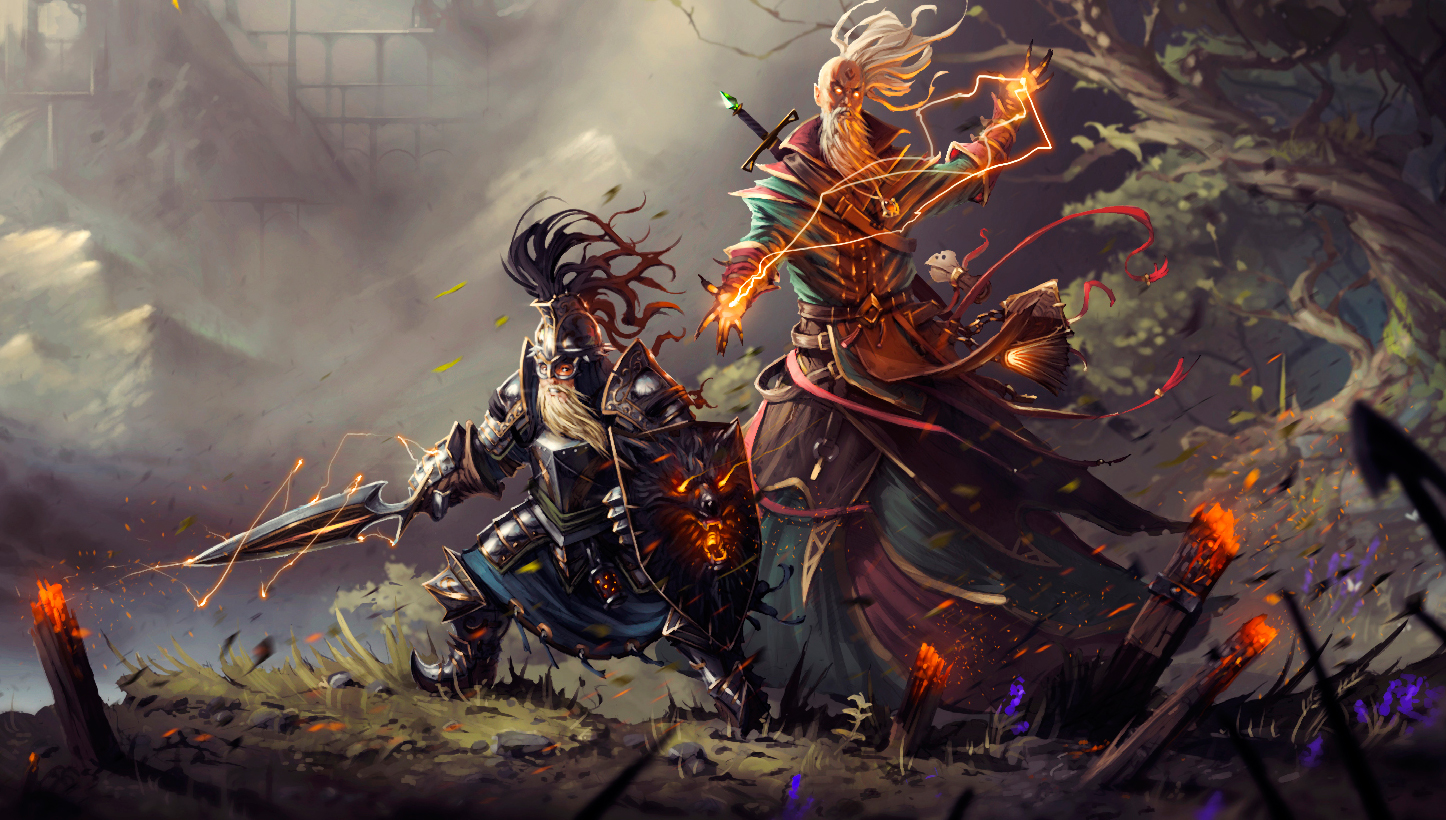How Larian broke out of the B-tier to master the RPG
The RPG studio that overcame its original sins.

When Larian boss Swen Vincke first heard that his debut RPG was going to be called Divine Divinity, he thought it was a joke. But his publisher in Germany, CDV, was all too serious. They'd had a hit with a game called Sudden Strike, and suspected that alliteration might be the key to long-term success. Reader, they were wrong.
Today, CDV is long dead. But the name ‘Divinity' remains—attached to almost every Larian project of note since. It's an artefact from a long and gruelling period in which the studio was subject to the whims of whoever held the purse strings. An inescapable reminder of the outside interference which the developer has now triumphantly expunged.
Of course, no Larian story begins with godhood. Getting there can be a slow, strategic, and sometimes bruising journey, and so it proved for the studio itself. Along the road to release, Divine Divinity was compromised not just by CDV, but the publisher before it, Atari. Larian should have been following in the wake of Baldur's Gate, its spiritual kin; instead, the studio's paymasters directed it to copy Diablo, the leading light in the adjacent action-RPG genre.
The result was an identity crisis viewed from an isometric perspective. On the one hand, Divine Divinity boasted the intricacy and interactivity of Vincke's beloved Ultima VII. In its world, every crate and barrel could be shunted around with the mouse, and every kitchen table relieved of its cutlery. Yet outside the alluring density of civilisation, the game devolved into long and testing dungeons, which leaned heavily on simplistic hack-and-slash combat. The fact that the screens seemed to roll on forever—unfurling a near-continuous tapestry rather than the discrete patchwork of the Infinity Engine games—only contributed to the sense that Divine Divinity was stretched thin. To quote Bilbo Baggins, it was like butter scraped over too much bread.
Divine tragedy
Nevertheless, it reviewed well. Launched during a CRPG drought in 2002, Divine Divinity won over a dehydrated hardcore, and justified a follow-up in the same style: Beyond Divinity. Yet the landscape was already changing beneath Larian's feet. With Knights of the Old Republic, BioWare had graduated to 3D games for a console audience, and pulled the entire RPG genre along with it. If Larian was to stand any chance of attracting publisher money, it had no choice but to follow.
Larian hadn't tempted new RPG converts away from Fallout 3 and Fable.
Divinity 2: Ego Draconis was exactly what an RPG was required to be in 2009: a fully voice-acted adventure in a shiny, sun-dappled land that was easily navigable via an Xbox 360 controller. To stand out from the crowd, Larian developed not one but two gimmicks: NPC mind-reading and the ability to dogfight in dragon form. But without BioWare's budget, Ego Draconis belonged firmly in the B-tier, alongside other European efforts like Risen, Two Worlds and a slightly muddled Polish novel adaptation of something called The Witcher.
Despite its best efforts, Larian hadn't tempted new RPG converts away from Fallout 3 and Fable. And in the pursuit of 3D fidelity, it had sacrificed much of the granular interactivity that had made Ultima VII so engrossing for a young Vincke.
Keep up to date with the most important stories and the best deals, as picked by the PC Gamer team.
"I lost track a bit," the CEO wrote in a 2012 blog post. "The joys of console development steered Divinity II far away from the original idea, and so many compromises were made in that game that what shipped was but a shadow of what I had envisioned it to be. In truth there are only a few gameplay moments in there that come close to the reason I set up this company."

High kick
As an overbloomed sun set on the noughties, Larian seemed doomed to repeat this unfulfilling cycle—chasing genre leaders at the behest of its publishers, and at the expense of its own vision for the future of the Western RPG. But something changed, and that something was Kickstarter: a lightning rod for the revival of the classic CRPG. The same movement Larian had just missed out on a decade earlier.
To the public, Larian pitched Divinity: Original Sin—appropriately named, since it was more or less the game Vincke had been attempting to make since the very beginning. Back was the isometric perspective, and the tactile connection to the world of Rivellon—an intricate creation you could pull apart with lockpicks and fireballs to discover its secrets. Returning, too, were those continuous maps—now backed by a sense of purpose. With a little ingenuity, you could engineer solutions to your problems using tools designed for other quests halfway across the level, rather like a Deus Ex or Dishonored player might.
Yet the wisest design decision came midway through production. Vincke was in the shower when he realised that, even though Larian was independent, it was still listening to the ghosts of publishers past. "What are we doing? We're making a real-time game because they told us," he thought, and later recounted to Game Informer. "We're gonna be competing with Blizzard making an action RPG? We can't compete with Blizzard, we don't have the resources."

Break free
Rather than make its Diablo mistake all over again, Larian turned Original Sin into a turn-based tactics masterclass. It struck a chord, topping Steam's sales chart upon release in 2014—before its sequel repeated the feat in 2017. Over the same period, Larian has become an experienced self-publisher, partnering only with companies who already love what the studio is doing, and aren't seeking to alter it.
Now, finally, Larian gets to join BioWare's lineage by developing an official follow-up to Baldur's Gate, the quintessential CRPG. The Forgotten Realms is a perfect home for the studio; like Rivellon, D&D's favourite setting is malleable by design, a blank canvas on which to scrawl scenarios and draw entertaining characters.
None of which is to say that Larian couldn't adapt its talents to a more specific fantasy world if required. But a recurring theme in the studio's work is the prisoner who, growing in power, breaks free of their shackles. Perhaps it's had enough restrictions for one lifetime.
Jeremy Peel is an award-nominated freelance journalist who has been writing and editing for PC Gamer over the past several years. His greatest success during that period was a pandemic article called "Every type of Fall Guy, classified", which kept the lights on at PCG for at least a week. He’s rested on his laurels ever since, indulging his love for ultra-deep, story-driven simulations by submitting monthly interviews with the designers behind Fallout, Dishonored and Deus Ex. He's also written columns on the likes of Jalopy, the ramshackle car game. You can find him on Patreon as The Peel Perspective.

